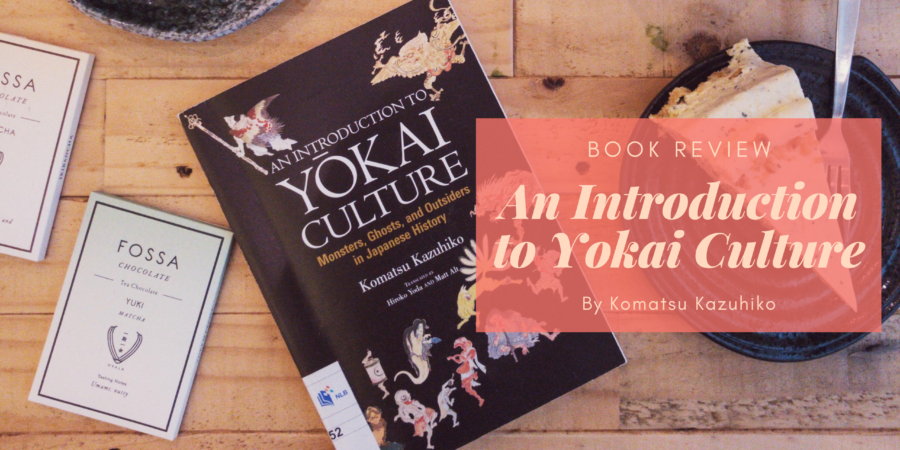I found this book by typing in “yokai” in the NLB’s search bar, because I can’t keep track of all the books coming out and I need my folklore fix. While this is not your standard collection of folktales or an introduction to Yokai in the style of Yokai Attack, I absolutely adored this slightly more academic take on Yokai.
An Introduction to Yokai Culture isn’t so much an introduction to the different types of yokai as it is an introduction to the study of yokai in Japan. The book covers the definition of yokai, the history of the word, Tsukimono, Kappa, Oni, Tengu, and more. While the topics aren’t as extensive as a regular yokai encyclopedia, the book goes into detail about how these yokai have been viewed over time, how popular images of them came about, and what they might be telling us about Japanese culture.
Two chapters of the book that stood out to me were those on Tsukimono and Ijin. The chapter on Tsukimono, which the book defines as a “vaguely defined spiritual presence that causes some abnormal or undesirable situation”, considers the topic of Tsukimono-suji, or families with Tsukimono lineages (aka they had spirits attached to them). From there, the book goes on to consider how a family might have a spirit attached to them, and discusses the use of such ideas in a community that is in flux and how it might be used against newcomers.
Likewise, the chapter on Ijin, or outsiders, focuses on the community. I had no idea about the darker side of how ijin were treated – that they could be sacrifices, so this chapter was pretty shocking and rather sad. There was also this quote about ijin that I wanted to share:
“Groups create ijin in order to define themselves as peers or insiders. These ijin are then used as a medium to strengthen the group’s own bonds of solidarity as it discusses how to deal with them, whether that means acceptance, self-segregation, or expulsion”
This definitely happens today, even when you’re not in Japan, which goes to show that through the study of culture via folklore, we can come to see the ways our cultures are similar (or dissimilar).
Overall, I really enjoyed this book and found myself taking copious notes. It’s not a very long book and although it’s an academic overview, the language used was easy enough for a layman like me to understand. I’d recommend this to people who love folklore and would like to take a step back and consider how folklore can reveal aspects of culture to us.

I know nothing about yokai so I think I’ll have to add this to my tbr!
Hope you get to read it! I learnt a lot from this book!
I’ve added it to my tbr! Fingers crossed I can get it one day!
Does “yokai” just mean folklore, or does it have a more specific regional or spiritual meaning?
This sounds really interesting. It is always a problem for communities to deal with things that might disrupt, and to come up with an explanation for why things go wrong. Often it’s a scapegoat, unfortunately.
So what I learnt from the book is that Yokai was originally an academic term for unexplained events, but in popular usage you’ll see it applied to monsters (like the kappa, the tengu, etc).
So, something like “cryptids” or “the paranormal” or something like that?
Yes, something like that!
My only knowledge of Yokai comes from the anime Yokai Watch, which my daughter really got into a couple or so years ago. I never knew it was based on folklore, but it makes sense.
I’ve heard about Yokai Watch! They’re in other anime too – Ge Ge Ge no Kitaro is probably really obvious but most fantasy anime will have some yokai.